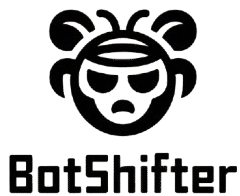Managing product data in manufacturing is never easy. When you add sustainability goals to the mix, it becomes even more complex. This is where a circular bill of material business central approach can transform how you operate.
In this guide, we’ll cover everything you need to know. You’ll learn what a circular BOM is, how it differs from a standard BOM, the benefits it brings, and how to create one in Microsoft Dynamics 365 Business Central. We’ll also share best practices, common mistakes to avoid, and future trends that could impact your business.
What is a Circular Bill of Material in Business Central?
A circular bill of material (BOM) is more than a simple list of components. It’s a design and production strategy that focuses on sustainability, reuse, and recycling.
In Microsoft Dynamics 365 Business Central, a circular BOM can be managed like any other BOM, but with added attention to the full lifecycle of materials. This includes the ability to track parts that can be refurbished, recycled, or repurposed.
Instead of ending a product’s journey at the point of sale, a circular BOM considers what happens after use. That means designing products that can be taken apart easily, identifying recyclable materials, and reducing waste at every stage.
Key Differences Between a Standard BOM and a Circular BOM
It’s easy to think a BOM is just a BOM but there are major differences between standard and circular models.
Standard BOM:
Focuses only on building the product.
Lists components without considering what happens after disposal.
Optimizes cost and efficiency during manufacturing only.
Circular BOM:
Designed for the entire lifecycle of the product.
Identifies reusable, recyclable, and eco friendly parts.
Aims to minimize waste and environmental impact.
Creates opportunities for refurbishing and reselling.
When managed in Business Central, a circular BOM goes beyond basic manufacturing data. It integrates with your supply chain, inventory, and product design processes to support long term sustainability goals.
Benefits of Using a Circular BOM in Business Central
Adopting a circular bill of material in Business Central offers multiple advantages:
Reduced Environmental Impact
You lower the waste generated by your operations and help meet corporate social responsibility goals.
Cost Savings
Reusing parts and materials can significantly cut procurement costs.
Compliance with Regulations
Many industries face strict environmental rules. A circular BOM can make compliance easier.
Enhanced Brand Reputation
Sustainability attracts customers. Showing your commitment can strengthen your brand image.
Better Supply Chain Resilience
If new parts are delayed, reusable components from existing products can keep production moving.
Step by Step Guide to Creating a Circular BOM in Business Central
Here’s how to set up a circular BOM in Business Central:
Step 1: Define Your Sustainability Goals
Decide what you want to achieve waste reduction, material reuse, or compliance.
Step 2: Identify Recyclable or Reusable Components
Work with your design and engineering teams to list parts that fit these criteria.
Step 3: Set Up BOMs in Business Central
In the BOM card, list all components, including their recyclability or reuse potential.
Step 4: Add Version Control
Business Central allows you to maintain multiple BOM versions. This is essential when improving your design for sustainability.
Step 5: Connect with Inventory
Make sure your inventory management module reflects reusable materials. This helps reduce unnecessary purchases.
Step 6: Monitor and Improve
Use Business Central’s reporting tools to track material reuse rates and waste reduction.
Common Mistakes to Avoid in Circular BOM Management
Even with the right tools, mistakes can happen. Here are common pitfalls and how to avoid them:
Incomplete Data Entry
Missing sustainability details for parts can reduce the effectiveness of your BOM. Always maintain accurate component records.
Lack of Team Training
If your team doesn’t understand circular principles, implementation will be weak. Provide regular training.
Not Using Version Control
Without it, changes in material or design can cause confusion and errors.
Ignoring Supplier Sustainability
Your BOM is only as green as your supply chain. Partner with eco conscious suppliers.
Real World Example of a Circular BOM in Action
Imagine a company manufacturing office chairs.
Instead of designing a chair that ends up in a landfill after five years, they create one with replaceable cushions, recyclable metal frames, and biodegradable packaging.
In Business Central, they tag each component with its sustainability attributes. When a cushion wears out, the system suggests the exact replacement from inventory reducing waste, saving money, and satisfying customers.
Integrating Circular BOM with Supply Chain & Sustainability Goals
A circular bill of material in Business Central doesn’t operate in isolation. It’s part of a bigger strategy:
Design Department: Chooses materials and structures for easy recycling.
Procurement Team: Works with suppliers offering sustainable products.
Production Line: Uses components efficiently and minimizes scrap.
Logistics: Plans reverse logistics for product returns and refurbishments.
By aligning all these areas, you create a smooth, sustainable workflow.
Leveraging Technology and Automation

Business Central offers several tools that make circular BOM management easier:
Automated Workflows
Approve BOM changes without manual bottlenecks.
Inventory Tracking
Instantly see available reusable parts.
Reporting and Analytics
Track material usage, waste levels, and cost savings.
Integration with Supplier Portals
Improve transparency and ensure sustainability compliance.
Automation reduces human error and speeds up processes, making your sustainability efforts more effective.
Continuous Monitoring and Improvement
A circular BOM isn’t a one-time setup it’s an ongoing process.
Set regular review cycles to:
Audit component sustainability data.
Track performance KPIs like waste reduction percentage.
Identify high impact improvements.
Business Central’s dashboards make this process easy by providing real time insights.
Future Trends in Circular BOM and ERP Systems
Sustainability is becoming a core business driver. Here’s what’s on the horizon:
AI Driven BOM Optimization
Artificial intelligence will help identify better materials and designs automatically.
Blockchain for Traceability
Blockchain can verify material origins and sustainability claims.
Global Compliance Integration
ERP systems like Business Central will include built in compliance checks for environmental regulations.
Companies that adapt early will have a significant advantage.
Conclusion: Building a Sustainable Future with Circular BOMs
The circular bill of material business central approach is more than a manufacturing strategy it’s a commitment to a sustainable future.
By understanding the differences from standard BOMs, leveraging Business Central’s features, avoiding common mistakes, and integrating circular thinking across your supply chain, you can boost efficiency, cut costs, and enhance your brand’s reputation.


